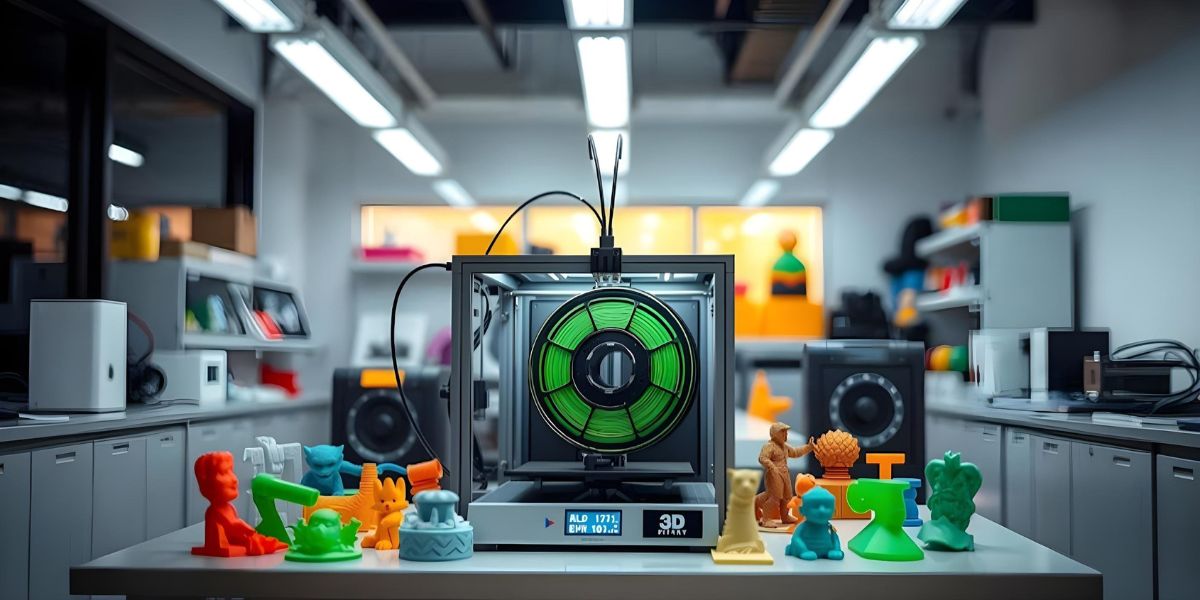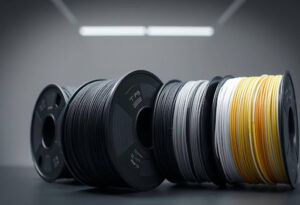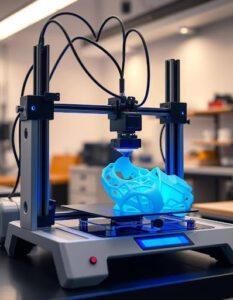
Everything You Need to Know About PLA Filament
In the evolving world of 3D printing, the material you choose plays a crucial role in shaping the outcome of your designs. Among the many options available, PLA filament continues to be a preferred material for professionals, educators and hobbyists alike. At Protomont Technologies a leader in 3D printing solutions across Mumbai, Hyderabad, Bangalore, Coimbatore and Rajasthan, we have seen firsthand how PLA especially our trusted FiLAMONT brand has empowered creators to bring their ideas to life with consistency and precision.
The Origin of PLA Filament: How It’s Made
PLA (Polylactic Acid) is a bio-based, biodegradable polymer made from the fermentation of natural sugars found in crops such as corn, sugarcane and cassava. During manufacturing, these plant-based materials are converted into lactic acid through fermentation. This lactic acid is then polymerized into polylactic acid which is extruded into 3D printer-ready filament strands.
The production process involves:

- Fermentation of biomass to produce lactic acid.
- Polymerization of lactic acid into PLA resin.
- Extrusion of resin into filament with tight diameter tolerances.
Unlike petroleum-based plastics PLA is eco-friendly and sustainable making it a perfect choice for environmentally conscious creators. At Protomont Technologies our FiLAMONT PLA undergoes strict quality checks during extrusion to ensure premium printability and minimal deviation in diameter.
How PLA Stands Apart: A Filament for Every Purpose
When compared to other common filaments, PLA offers a unique combination of ease eco-responsibility, and aesthetic appeal. Here’s how it differs from others:
| Property/Feature | PLA | ABS | PETG | Nylon | TPU |
| Source | Plant-based | Petroleum | Petroleum | Petroleum | Petroleum |
| Biodegradable | Yes | No | No | No | No |
| Printing Ease | Very Easy | Moderate | Moderate | Difficult | Moderate |
| Warping | Minimal | High | Low | Moderate | Low |
| Odor | Sweet, low | Strong, unpleasant | Mild | Mild | Mild |
| Application Fit | Prototypes, models, decor | Automotive, tools | Bottles, mechanical parts | Gears, functional parts | Flexible models |
Where other filaments focus on industrial robustness, PLA balances printability with aesthetics and environmental consciousness making it a go-to for non-load-bearing yet highly visual and detailed parts.
Categories of FiLAMONT PLA Filament: Designed with Precision
Protomont Technologies’ exclusive FiLAMONT brand offers several refined PLA variants to suit diverse project requirements:
- Standard PLA: Balanced for everyday prints and educational models.
- Silk PLA: Delivers a luxurious glossy finish ideal for home décor and presentation models.
- PLA+: Tougher and slightly more heat-resistant; perfect for light mechanical applications.
- Matte PLA: Non-reflective and professional often used in architecture and product design.
- Specialty PLA: Includes glow in the dark and gradient filaments for artistic and teaching tools.
Each category is engineered to offer consistent extrusion vibrant color stability, and superior layer adhesion.
Why is PLA Filament So Popular?
PLA’s rise in popularity can be credited to multiple reasons:
- Eco-Conscious Manufacturing: PLA’s renewable sourcing and industrial biodegradability give it a green advantage.
- Beginner-Friendly Nature: PLA prints at low temperatures and adheres well to beds, even without enclosures.
- Beautiful Prints: Whether for figurines, models, or branded prototypes PLA prints come out smooth and detailed.
- Low Emission: It produces minimal odor and is safe for home or classroom use.
Use Cases Across Industries: PLA in Action
From startups to research labs the demand for 3D printing machine parts and visual prototypes has grown across India. PLA plays a critical role in fields like:
- Architecture & Interior Design: Silk and matte PLA are widely used for concept models, space planning miniatures, and presentation mockups.
- Education & STEM Learning: Safe and easy to print PLA is used to create science models, teaching aids, and engineering kits.
- Product Design & Branding: Ideal for visual mockups, packaging prototypes, and event giveaways.
- Art & Home Décor: Artists and DIY enthusiasts rely on PLA for lightweight and durable decor elements.
- Medical Training: Used in creating anatomical models for hands-on learning (non-surgical use).
With customized solutions, Protomont Technologies has supported educational institutions and product designers across Mumbai, Hyderabad, and beyond offering guidance on filament selection, machine settings and design optimization.
Printing Tips: How to Minimize PLA Issues
While PLA is known for being user-friendly, a few issues may arise such as stringing, poor bed adhesion or brittleness. Here’s how to fix them:
Problem: Stringing and blobs
Solution: Lower nozzle temperature slightly and enable retraction settings.
Problem: Warping from the build plate
Solution: Use a heated bed (50–60°C) and ensure good surface prep (glue stick, tape, or PEI).
Problem: Brittle filament
Solution: Store PLA in dry, airtight containers with silica gel packs. Moisture degrades print quality.
Problem: Layer splitting or poor bonding
Solution: Maintain optimal print speed (40–60 mm/s) and fan cooling for sharp overhangs.
Interesting Facts About PLA
- PLA can be composted industrially, breaking down within 90–120 days under specific conditions.
- PLA is often used in biodegradable medical implants like sutures and pins.
- FiLAMONT Silk PLA is engineered to reflect light differently, giving your prints a metallic sheen without post-processing.
- PLA prints are UV sensitive so avoid outdoor use unless coated or sealed.
Eco-Friendly Alternatives and Natural Filaments
As environmental concerns grow, natural and biodegradable filaments like PLA are gaining more attention. While other materials like wood-fill PLA, hemp filled PLA and recycled PLA blends are emerging, FiLAMONT focuses on maintaining premium mechanical performance with eco-conscious responsibility.
We prioritize:
- Biodegradable formulations.
- Low-emission production.
- Recyclable spool designs.
Our goal is to help build a sustainable future for 3D printing in India, one spool at a time.
Technical Print Settings for PLA Filament

| Setting | Recommended Value |
| Nozzle Temp | 190–220°C |
| Bed Temp | 50–60°C |
| Layer Height | 0.1–0.3mm |
| Print Speed | 40–60 mm/s |
| Cooling | 100% Fan |
These settings are ideal for FiLAMONT PLA across standard FDM 3D printers.
Questions People Ask
What is PLA filament made of?
PLA filament is made from plant-based resources like corn starch and sugarcane. It is biodegradable and environmentally friendly.
Where can I buy PLA filament near Mumbai or Hyderabad?
You can purchase FiLAMONT PLA from Protomont Technologies which offers fast delivery across all major cities in India.
Which PLA filament is best for visual prototypes?
Silk PLA or Matte PLA are perfect for visual and decorative models due to their premium surface finish.
Is PLA filament safe for classroom or indoor use?
Yes, PLA is non-toxic and emits a pleasant smell during printing, making it ideal for schools and home workshops.
How can I prevent PLA from becoming brittle in storage?
Store your filament in an airtight box with desiccants to protect it from humidity.
Looking for the best PLA filament that balances sustainability and precision? Why not try FiLAMONT from Protomont Technologies today?
Still curious about which PLA filament suits your needs?
Visit Protomont Technologies or connect with our team in Mumbai or Hyderabad for personalized recommendations and live demonstrations.

